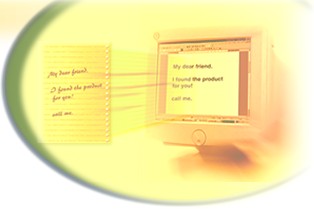
|
|||||||||||||||||||||||||||||||||||
|
CharacTell has developed breakthrough handwriting recognition technologies based on a
totally new recognition methodology. Only Charactell quickly learns
users' unique handwriting styles, achieving a high
recognition rate after training by only a few samples from a single writer. The reason for the
engine's success lies in the
underlying algorithms, which implement an innovative approach to the recognition problem.
Up to today, the recognition of lower case letters in the form-processing market was considered to be unsolvable. Human handwriting includes many letters that may have ambiguous meanings. Thus, for example, some people write the letter "e" in exactly the same way that others write the letter "c". Only CharacTell's approach can recognize such problematic characters. Currently, handwriting recognition products achieve about 85% recognition rates for mixed upper- and lowercase letters (non-connected) and about 90% for upper cases only. This means that almost every second word requires human correction. Meanwhile, research has shown that people find handwriting recognition software to be useful only when it succeeds in recognizing over 97% of the characters. The results achieved by CharacTell's technology are outstanding: in most instances, the success rate for mixed upper and lower (non-cursive) characters is around 98%, and for upper cases only, it is near 99%! Such a success rate in character recognition means that only one word in about every 2 lines will require human correction. In contrast to the simple operation procedure, the algorithmic tasks running the program are very complex. The software recognizes the handwriting of the user from a scanned document by using several recognition engines with a voting mechanism. It then compares the recognized text with dictionaries, and the ambiguous words are transferred to the user for correction. Furthermore, a learning procedure is applied at the end of the scanning in order to refine the engine's learning of the user's handwriting style, which serves to improve the subsequent results. |
|||||||||||||||||||||||||||||||||||


